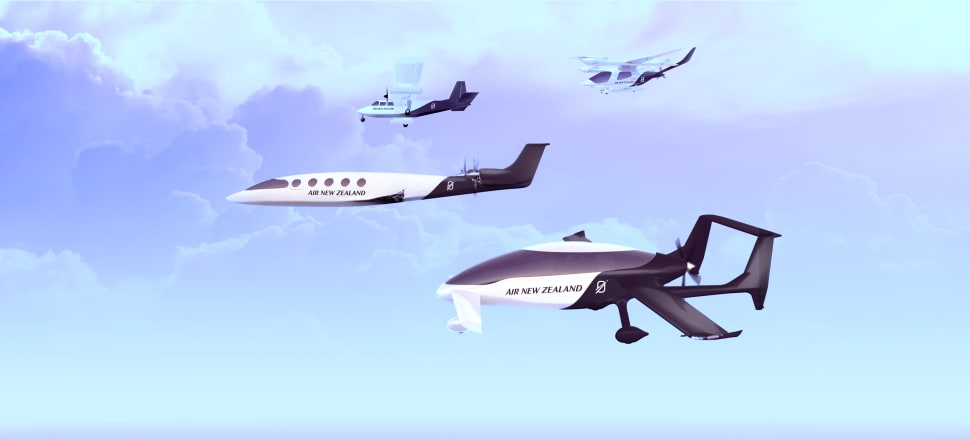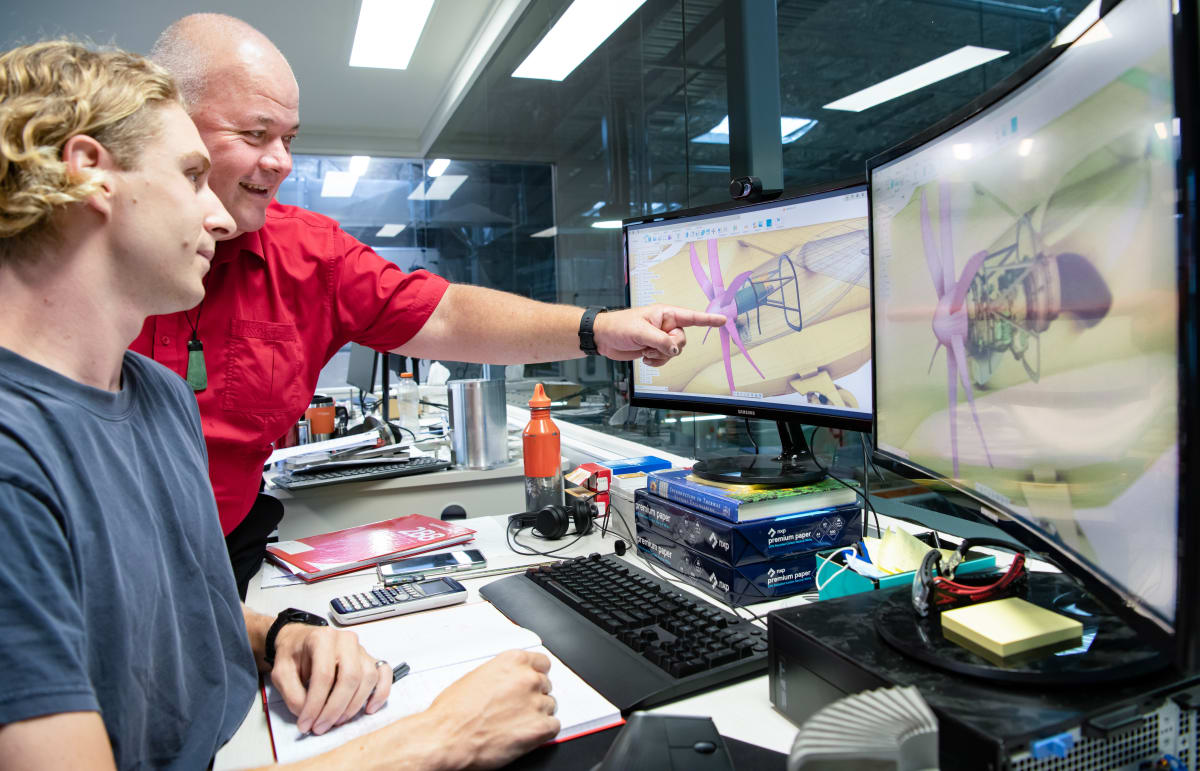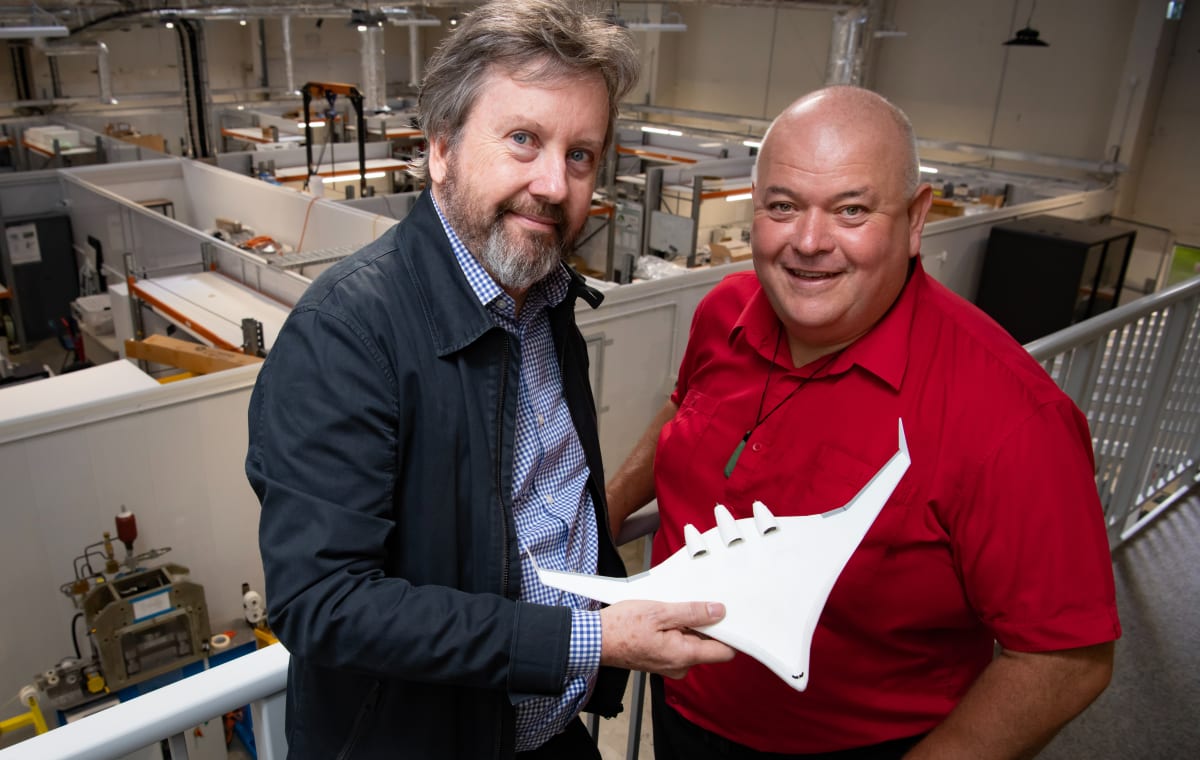
New Zealand scientists are building a lighter, more reliable electric engine that they hope could put our country at the centre of the global aviation industry
On a clear December morning in 2019, the world's first fully electric commercial plane flew across the Fraser River in British Columbia, Canada. The four-minute, six-passenger flight made history as the first shot in the electric aviation revolution.
The electric revolution may have begun, but there’s turbulence ahead. Today, aviation accounts for 3.5 percent of global carbon emissions, and that will rise, along with passenger numbers.
In response, governments and airlines are redoubling their commitments to decarbonise air travel, with many committing to become carbon free by 2050. As yet, these promises have no technological basis.
READ MORE:
* Govt agencies buy more petrol and diesel cars – despite big EV subsidies
* The pain of charging your EV on the go
Only very small planes travelling very short distances have been electrified. As the size of an aeroplane increases, so do the problems that come with electrifying its engine.
“There are many challenges to overcome, but one of the biggest is propulsion,” says Professor Rod Badcock from Paihau-Robinson Research Institute, part of Te Herenga Waka Victoria University of Wellington.
Propulsion is the power needed to move the aeroplane forward.
“Safety will need to be proven out over many multiple rounds of rigorous testing. It will be a long process, it could take decades, which is why it’s crucial that we start this work now.” – Prof Rod Badcock, Te Herenga Waka
“The very best conventional motors are 5kW per kg,” he explains, referring to the ‘power-to-weight’ ratio that beguiles motor engineers. Electric motors are full of copper and iron, and therefore heavy, so it’s a constant struggle to maximise the engine’s power output while minimising its size.
A large plane such as the Airbus A320 needs a pair of 15MW electric engines. By today’s standards, the motors together would weigh 15,000kg – nearly 10 times more than a gas turbine of comparable power. As anyone who has packed for a budget flight will know, there are few things in life stricter than weight limits on an aeroplane.
“Traditional electric motors made from copper windings have had 200 years of development. They are pretty much state-of-the-art now.”

Even at their best, today’s electric motors needed to power long-haul flight are simply too heavy to take-off. A step-change in design is needed, Badcock says.
Enter superconductors: a curious group of materials capable of conducting huge amounts of electricity at no loss. A superconducting wire can carry hundreds of times more current than a copper wire of the same size.
“Superconductors allow you to break the power-to-weight limit imposed by copper windings. All of a sudden, you can design powerful electric engines and generators with no copper and no iron, making them small and light.”
Safety first
The airline industry’s cautious approach to adapting new technologies, for obvious good reason, is part of why the sector has proven so difficult to decarbonise.
Badcock is optimistic, however. Air New Zealand has announced Robinson Research Institute as a long-term strategic partner in its work to introduce zero-emissions flight a reality, along with Airbus, Embraer and other aviation tech firms.
“When you look at countries around the world which have trialled electric transport, whether bus or rail, they rapidly moved the whole fleet over to electric. The reason is reliability in service.”
That reliability translates to a good record on safety and low maintenance, because of electric engines having fewer parts than mechanical ones.
"Even replacing one part of a traditional motor with a superconducting component could lead to huge efficiency gains." – Grant Lumsden, Wellington UniVentures
“The probability of failure goes up exponentially with the number of components. A jet turbine has upwards of 16,000 parts, whereas an electric motor has about 100. The chances of something going wrong are many, many magnitudes smaller.”
So far, so promising. But Badcock acknowledges it’s a long road ahead for anyone looking to transform the airline industry.
“Safety will need to be proven out over many multiple rounds of rigorous testing. It will be a long process, it could take decades, which is why it’s crucial that we start this work now.”
Flying into the future
Will New Zealand-made superconducting machines power the aeroplanes of the future?
It’s too early to tell which technology will win the race to decarbonise aviation. But if we wait until the answer is obvious, we will be too late. And if everyone waits, then we won’t get there at all.
Dr Grant Lumsden is partnerships manager at Wellington UniVentures, the university’s technology transfer office responsible for protecting and commercialising researchers’ IP. He says the big technological challenge with all the large-scale electric aviation proposals is that it “assumes you can get the electricity from somewhere. At the moment, we think that will be by hydrogen”.
He says clean and efficient liquid hydrogen makes a nearly perfect jet fuel, but it’s a radically new proposition for an industry that is famously hard to change.
"Decarbonising aviation is an incredibly big challenge and we must act now to find solutions." – Kiri Hannifin, Air NZ
Hydrogen teamed with a fully electric motor would require a step-change in aircraft design as the two-wing frame, designed around the massive jet engines, would become obsolete.
Dr Lumsden acknowledges that getting people comfortable sharing an aeroplane with a hydrogen tank may take some work, too.
“So it’s likely that other solutions such as sustainable aviation fuels will be an easier initial option for large aircraft by the likes of Boeing and Airbus, rather than going for the fully electric route.”
And where industry goes, government money for research and development tends to follow, he says.
But the power-to-weight advantages of a superconducting motor are simply too good for the industry to ignore.
“There’s going to be a place for superconducting machines, and big industry players such as Airbus and Pratt and Whitney already have advanced programmes in this area. Even replacing one part of a traditional motor with a superconducting component could lead to huge efficiency gains.”
The country’s flag carrier is also taking note of superconducting motors as an important breakthrough technology.

Air New Zealand has announced Robinson Research Institute as a long-term strategic partner in its commitment to make zero-emissions flight a reality, along with Airbus, ATR, Universal Hydrogen, Embraer, and Heart Aerospace. The institute will evaluate and validate new propulsion technology as concepts develop, ensuring they can be integrated into a future air transport system.
Air New Zealand Chief Sustainability Officer Kiri Hannifin says decarbonising aviation is "an incredibly big challenge" and the airline must act now to find solutions.
"Robinson Research Institute is a world-leader in developing power electronics and superconducting machines. These have the potential to revolutionise electric air travel, so we’re working together on progressing the development of superconducting technology for the global aviation industry."
Nina Vidović works with Wellington UniVentures as a communications specialist, as part of her postgrad science degree.







